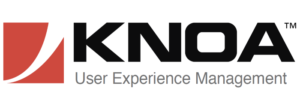The sudden Coronavirus-driven work from home (WFH) trend caught many organizations by surprise.
It’s not that they hadn’t considered WFH before, and to be sure, most organizations already had a WFH policy for certain employees in certain situations. But before this pandemic changed our world, WFH was more the exception than the rule.
There are a few reasons for this fact. Executives value in-person interactions, both among employees and between employees and customers. Having everyone in the office fosters informal communication and camaraderie.
But the biggest reason why many organizations frowned upon too much WFH? Fear that employees would become distracted and thus less effective, lowering their productivity.
Today, everything has changed. For many organizations, everybody is WFH. Does that mean a less rigorous management approach, now that employees are no longer under the watchful eye of their bosses? Should managers crack the whip somehow, counteracting their reports’ distractions with rigorous watchfulness?
Not so fast. Now is the time, not for whip cracking, but for enlightened leadership. Maintaining WFH employee productivity requires some counterintuitive thinking as well as better management tools. Here are some pointers.
Five Principles of Effective WFH Management
Modern management theory encourages managers to be leaders and facilitators rather than bosses. Horizontal organizational structures that push responsibility down into the organization are more effective and agile than traditional hierarchical structures that concentrate responsibility at the top.
Fair enough. The real challenge today, however, is applying these best practices within a WFH employee base. The first principle: overbearing management lowers productivity, rather than raising it.
Regardless of whether employees working from home or not, they’ll be more productive when their bosses aren’t breathing down their necks. Nothing changes with WFH.
Principle #2: Different people react to WFH differently. Managers should be coaches, not bosses. In many cases, some WFH people are old hands at it, while it’s entirely new for others. Managers must be sensitive to the differences and coach the WFH newbies accordingly.
The third principle: People generally want to do well at their work. Managers should be facilitators, not slave drivers. In other words, trust your employees. In large part they want to do well. They want to help the organization achieve its goals. They want to work hard.
It’s up to management to give such employees the support they need – whether it be ensuring technology works properly, cutting through bureaucratic red tape, etc. If there’s a problem, say with an application people need to access to do their jobs, it’s up to management to identify the problem and fix it ASAP.
That brings us to principle #4: If there’s a problem, it’s more likely to be with the tools than the person using the tools. This principle is especially important when the tools in question are IT-related.
Is somebody slow to complete a report? Don’t jump to the conclusion that they’re slacking off. It’s more likely that the application was slow, they ran into a bug, their Internet connection had an issue, or they had to reboot their computer.
Our final principle: A solitary problem doesn’t say much about its cause. A problem with a pattern across employees tells you it’s not about individual employees. If one person completes a task late, suspect technology first to be sure, but there’s still a chance the problem is with the employee.
However, if you’re able to collect information about the productivity of multiple employees, then you have the luxury of being able to look for patterns. If everybody has a problem with a task – say, submitting timesheets takes twice as long as usual on a given day – then rest assured, the problem isn’t with the employees. It’s going to be a problem with the technology they’re using.
Managing what you Measure with User Experience Management
 The final principle highlights an important management principle: it’s necessary to leverage information about employees in order to manage them properly. In a WFH environment, this principle is essential. Management needs the right tools to accomplish this goal.
The final principle highlights an important management principle: it’s necessary to leverage information about employees in order to manage them properly. In a WFH environment, this principle is essential. Management needs the right tools to accomplish this goal.
In particular, user experience management (UEM) software like Knoa UEM can be a critical part of any WFH management strategy. Companies can use the metrics they collect through UEM software to determine how engaged workers are in their tasks, or if they are facing technical or workflow issues.
In today’s environment, everybody is struggling with WFH to some extent. UEM software can identify the individuals who are having the hardest time, and the specifics of the problems they’re dealing with.
Knoa UEM can tell, for example, who is using which applications, how long they spend on each task within each application, and where the slowdowns are – either within an application, or for a workflow that spans multiple applications. As a result, managers can zero in on any issue that is impacting productivity.
The Intellyx Take
Tools are only as good as the people using them. Micromanagers could certainly use UEM to micromanage their reports, thus lowering productivity rather than raising it.
On the other hand, the most enlightened leaders can go astray when trying to lead their WFH cadre if they lack sufficient information to do their jobs properly. UEM can provide essential insights for such executives, thus making them better leaders even though their staff is WFH.
If you’re a manager struggling with how to manage a WFH team, take heart. Technology is at the heart of the WFH movement, and with technology like UEM, you can avoid the pitfalls of micromanagement and become an outstanding leader, even in these unprecedented times.
Copyright © Intellyx LLC. Knoa is an Intellyx customer. Intellyx retains final editorial control of this article.




Comments
Comments are closed.